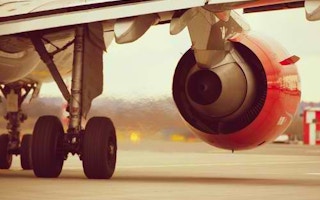Global aviation experts agreed on Monday to the first emissions-reduction standards for aircraft in a deal that will take effect with new models in four years, but environmental groups said the carbon dioxide cuts did not go far enough.
The standards are aimed at makers of small and large planes alike and will apply to all new aircraft models launched after 2020, the Montreal-based United Nations aviation agency said.
They will also be phased in for existing aircraft built from 2023, with a cut-off date of 2028 for planes that do not comply with the new standard.
The standards, agreed to after six years of talks, must still be approved by the International Civil Aviation Organization’s governing council later this year. The standards would become mandatory for national aviation authorities around the world.
Negotiators from 22 countries have been trying to come up with the world’s first carbon dioxide emissions standards for aircraft as part of the industry’s contribution to efforts to combat climate change.
Aviation was not included in the global climate deal reached at a UN conference in Paris in December, but ICAO had been trying to nail down the standard as the first of a two-part strategy after six years of talks.
The White House welcomed the outcome. “The US pushed hard for a strong standard and I think we are very pleased with the result,” a senior administration official told reporters.
Estimates for carbon emission reductions from applying the new standards vary widely. The White House said in a fact sheet it would reduce 650 million tonnes of carbon dioxide emissions between 2020 and 2040.
“
The proposal will only require CO2 reductions from new aircraft of 4 per cent over 12 years, when market forces alone are predicted to achieve more than a 10 per cent efficiency gain in the same time frame.
Drew Kodjak, ICCT executive director
Environmental group Transport and Environment, however, estimated reductions closer to 300 million tonnes over the same period, while the International Council on Clean Transportation projected even fewer emission cuts.
“The proposal will only require CO2 reductions from new aircraft of 4 per cent over 12 years, when market forces alone are predicted to achieve more than a 10 per cent efficiency gain in the same time frame,” Drew Kodjak, ICCT executive director said in a statement.
The standards would not apply to existing aircraft in service but would require future planes to be light and fuel efficient.
That will not affect planemakers Boeing and Airbus’ newest models, such as the 737 MAX or A320neo, since those already exceed the standards. Older planes still in production, such as the 747 and A380 jumbo jets or A330 and 777, would either need to be phased out by 2028 or made more efficient.
“It will influence the R&D budgets at the plane and engine makers that already are focused on fuel burn and make sure that remains a continued emphasis,” said one industry expert.
Commercial jets
Sources familiar with the process said ICAO may exempt some aircraft types, but those exclusions may not happen until the autumn.
Boeing welcomed the announcement and said its new commercial airplanes “have been designed to meet and even exceed challenging emission requirements.” Airbus said it was “investing heavily” to reduce “fuel burn, emissions and noise significantly on current and future aircraft.”
Planes weighing 60 tonnes or more, which include commercial passenger jets, generate the majority of carbon dioxide emissions from the aviation sector.
Commercial aircraft account for 11 per cent of carbon emissions from transportation worldwide.
“This outcome was the minimum needed from ICAO for a credible first start,” said Bill Hemmings, aviation director for the Brussels-based Transport & Environment.
ICAO is due to finalise a market-based mechanism for all airlines later this year. Environmental groups say that measure will result in much deeper emission cuts.










